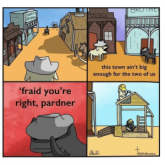@Craig, I'm thinking that you probably know about as much about TCP/IP and UDP ethernet protocols as you do about CAN bus. The funny thing is that you use all of these every day. These technologies are mature enough that most people simply use them at their disposal without even knowing what they are. You plug in the network cable, or log onto Wi-Fi, and they work.
The fact that you are in a position to implement it in your solar system doesn't change that. Will there be a little work to do to get things all set up? Sure! That's what DIY is all about!
You will plug a cable with 2 wires into your BMS and the other end into the SolArk and it will work if they are talking compatible protocols. If that doesn't happen to be the case,
@curiouscarbon has a good idea. I'm thinking an Arduino might be able to convert protocols.
There is no simpler way to communicate between electronics. Multiple BMSs can all talk on the same CAN bus. Just like the hundreds of sensors in cars these days.
As I have mentioned before, there are batteries out there that have been proven to talk over CAN to the SolArk, so it's definitely doable it will just cost a bit more than a DIY solution.




